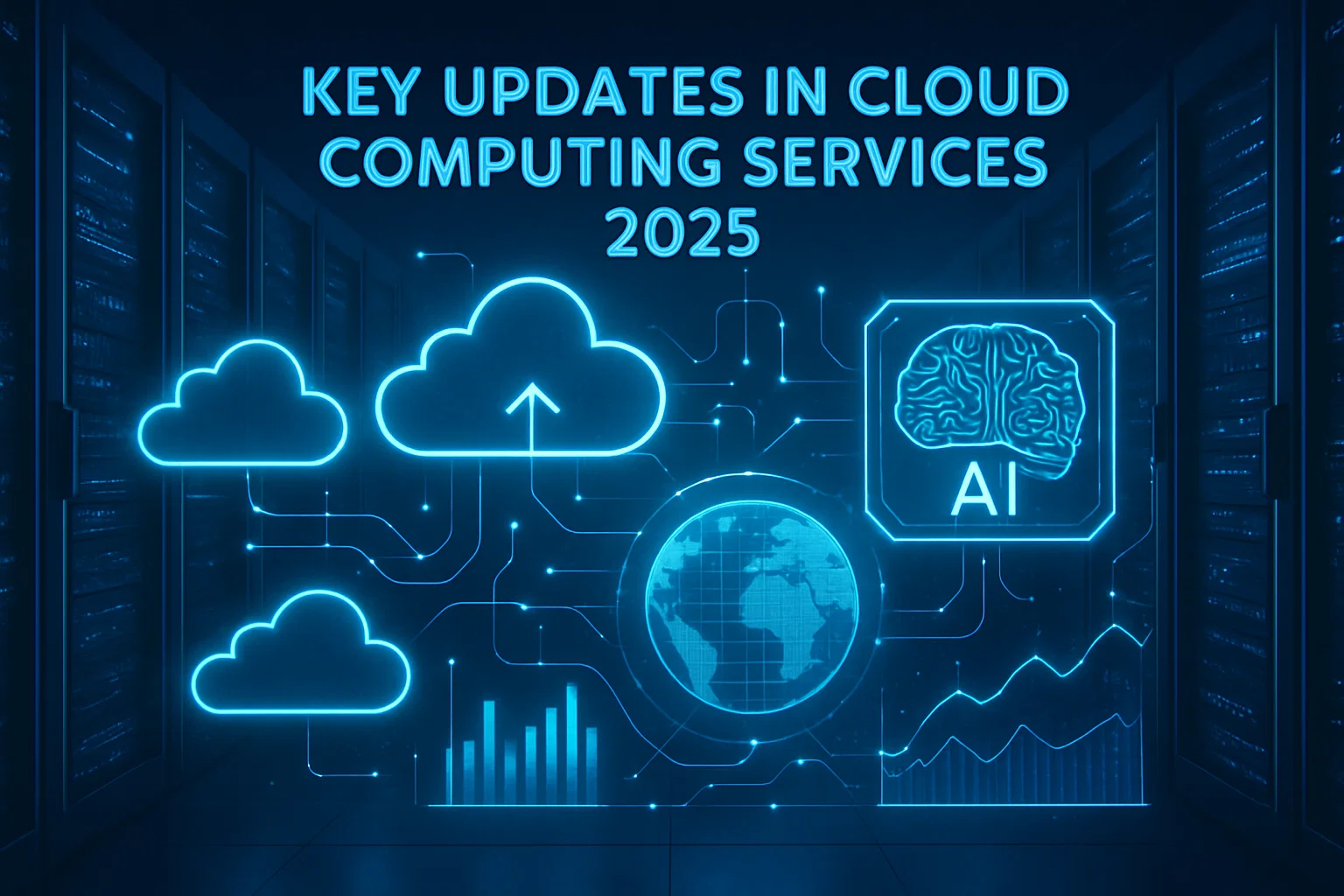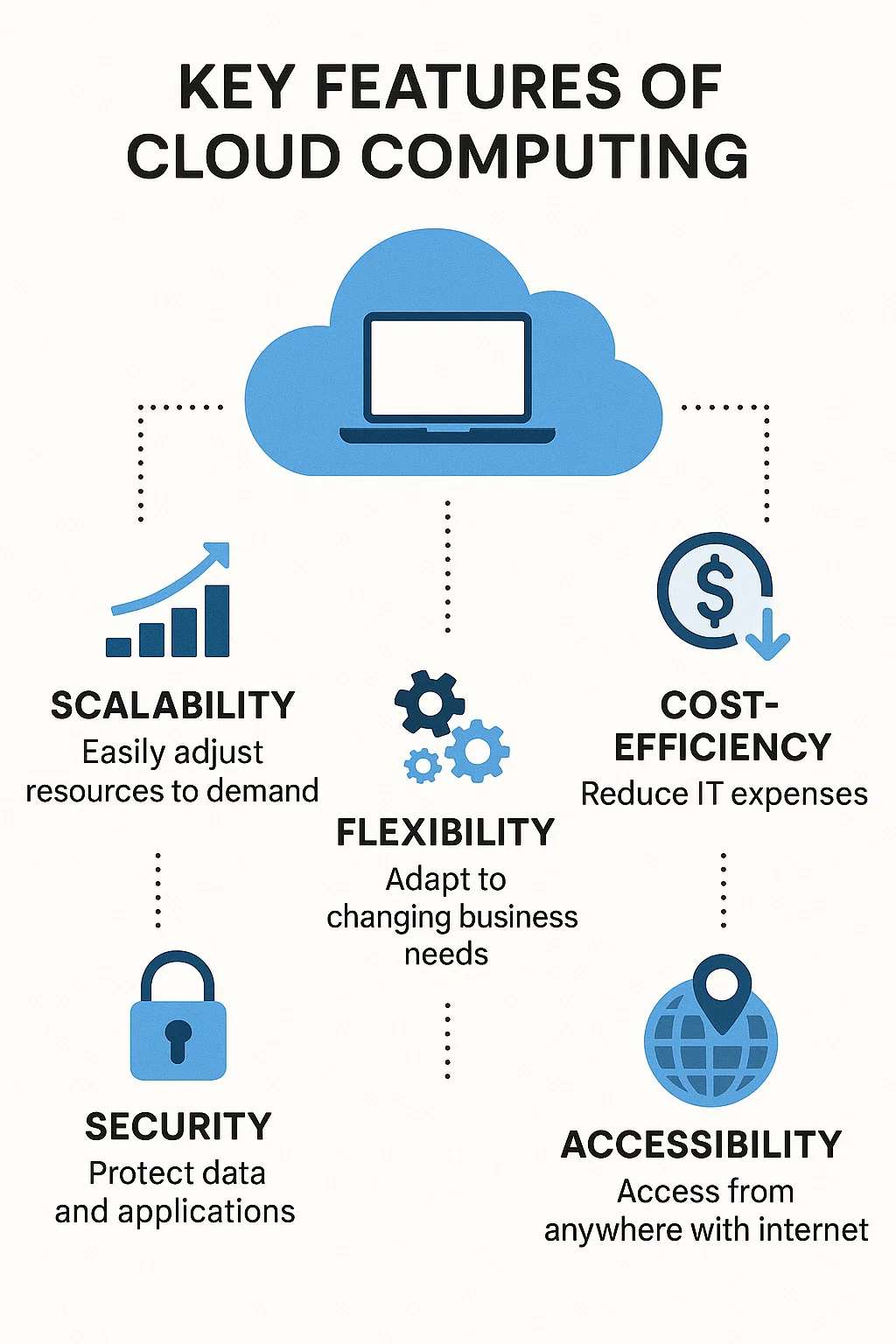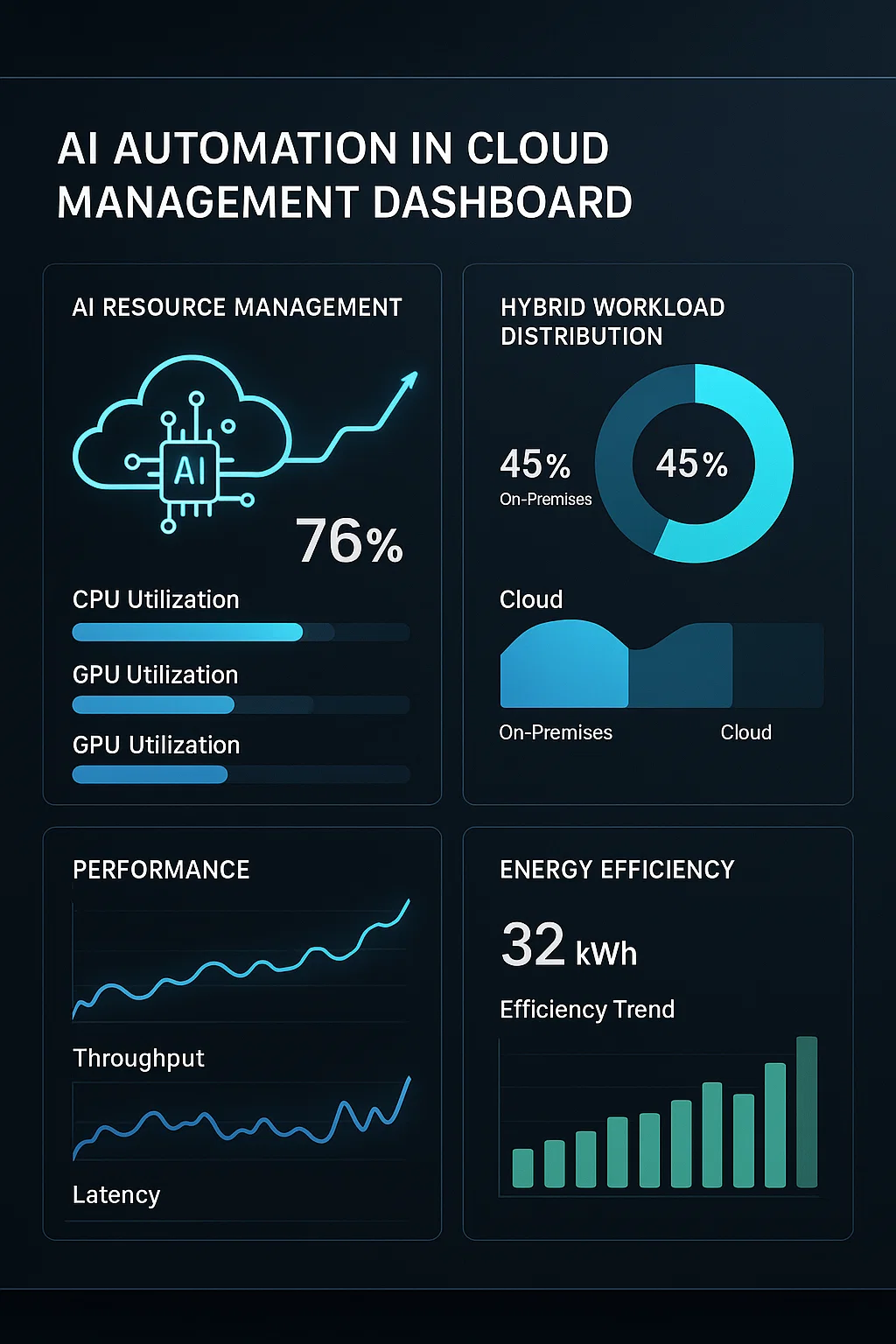
Why Cloud Computing Matters More Than Ever
In 2025, cloud computing isn’t just an IT tool, it’s the digital backbone powering almost every modern service. From AI-powered apps to global data storage, the cloud now hosts over 94 percent of all enterprise workloads (Statista, 2025). Businesses, schools, hospitals, and even home devices rely on the cloud’s agility to stay connected and efficient.
The COVID era accelerated adoption, but what we’re seeing now is strategic maturity. Cloud systems have evolved from “remote storage” into dynamic ecosystems where AI optimizes workloads, sustainability drives architecture, and multi-cloud strategies dominate boardroom decisions.
Take Amazon Web Services (AWS) as an example. In 2025, AWS expanded its Asia-Pacific region with carbon-neutral data centers and localized AI services, helping small businesses access enterprise-grade analytics with near-zero latency. This kind of flexibility shows how cloud technology keeps pushing innovation, not just in big tech, but across small and medium enterprises too.

The 5 Key Features Driving Modern Cloud Computing
The core of the cloud remains the same: speed, access, and reliability. But in 2025, five features define what separates modern cloud services from traditional IT.
| Feature | Description | 2025 Innovation Example |
|---|---|---|
| Scalability | Dynamically adjusts resources based on demand. | AWS Auto Scaling Groups now use predictive AI to scale apps before traffic spikes. |
| Cost Efficiency | Pay only for resources you use, no hardware waste. | Google Cloud’s FinOps suite automatically reallocates idle resources to cut costs by up to 40%. |
| Reliability & Security | Always-on uptime plus end-to-end data protection. | Microsoft Azure introduces post-quantum encryption algorithms for secure transactions. |
| Accessibility & Collaboration | Enables real-time data sharing from any device. | Dropbox Business Cloud integrates with Slack AI assistants for seamless document sync. |
| Sustainability | Energy-efficient cloud operations reduce carbon footprint. | IBM Green Cloud deploys AI to monitor data center energy consumption in real time. |
1. Scalability and Flexibility
Businesses can instantly scale up during peak demand, like e-commerce surges on Black Friday, then scale down to save money. This elasticity allows startups and enterprises alike to operate with zero downtime.
2. Cost Efficiency
Pay-as-you-go models replace capital expenses with operational ones. Combined with FinOps frameworks, companies gain better visibility over spending, turning cloud billing from guesswork into strategy.
3. Reliability and Security
Cloud providers invest heavily in redundancy and AI-driven security tools. Zero-trust architecture is standard now: no device or user is trusted by default. Azure’s Confidential Computing runs sensitive data inside encrypted memory regions, a vital move against data breaches.
4. Accessibility and Collaboration
Hybrid work culture demands always-available data. Cloud tools like Microsoft 365 Copilot and Google Workspace integrate AI assistants that summarize documents, schedule meetings, and translate languages instantly.
5. Sustainability and Green Cloud
Data centers consume massive energy, but the industry is shifting to green operations. By 2025, Amazon committed to 100% renewable energy for its facilities. AI helps route workloads to cooler regions to cut power consumption.
Latest Technologies Powering Cloud Transformation
The past year has been a goldmine of innovation. Here are the biggest game changers reshaping cloud architecture in 2025.
AI-Driven Automation
AI now manages resources better than humans. Machine-learning models analyze usage patterns to allocate CPU and storage in real time. Gartner reports that by 2026, 75% of cloud operations will use AI for auto-scaling and security responses.
Example: Google Cloud Gemini AI automatically detects misconfigured VMs and applies fixes without human input, a huge step toward self-healing clouds.
Edge Computing
Processing data closer to its source, factories, vehicles, IoT devices, reduces latency and bandwidth costs. 5G and edge cloud integration make real-time applications like autonomous vehicles and AR practical today.
Serverless and Containerization
Developers don’t worry about servers anymore. Platforms like AWS Lambda and Kubernetes Orchestrator handle deployment automatically. It speeds up development and reduces maintenance work by 30%.
Quantum Computing Integration
Quantum cloud services from IBM and Amazon let researchers simulate complex molecules and encryption schemes. We’re not at mass adoption yet, but 2025 marks a turning point where quantum APIs are publicly available.
Low-Code/No-Code Development
Cloud platforms like Microsoft Power Apps enable non-coders to build applications through drag-and-drop interfaces. This democratization reduces development costs and bridges the IT skills gap.
Major Players and Innovations to Watch
Amazon Web Services (AWS)
Still the market leader with a 33% share. AWS is betting big on sustainability, its 2025 “Hydrogen-Powered Data Center Initiative” reduces carbon output by 82%. AI-assisted monitoring now predicts hardware failures weeks in advance.
Microsoft Azure
Azure’s “Unified AI Fabric” links machine learning, data storage, and analytics into a single platform. Businesses use it to train AI models faster and securely share datasets across departments.
Google Cloud
Focused on open infrastructure and responsible AI. Its Gemini platform enhances DevOps automation, security auditing, and energy management through AI feedback loops.
IBM Cloud and Red Hat
IBM’s Quantum Computing Service and Red Hat OpenShift remain essential for hybrid environments. Their joint security frameworks are widely used in finance and healthcare.
Emerging Players
Alibaba Cloud and Cloudflare are expanding edge capabilities in Asia and Europe. Start-ups like Wasabi and DigitalOcean cater to SMEs with simplified pricing and localized data storage.
The Shift Toward Hybrid and Multi-Cloud Models
No single cloud can do it all. Organizations now mix public and private clouds to balance cost, performance, and compliance. Hybrid models allow sensitive data to stay on-premises while public clouds handle scalability.
Financial Firms Case Study: A European bank moved client analytics to the public cloud but kept transaction data on a private server. This cut infrastructure costs by 40% while maintaining GDPR compliance.
Multi-cloud strategies reduce vendor lock-in, a major risk for businesses. Tools like VMware Cloud and Terraform simplify management across providers, offering a single dashboard for multiple environments.

Cloud Security and Compliance in 2025
As data flows across borders, security is the number-one concern. Cloud providers are embedding AI and zero-trust architectures to stay ahead of threats.
Data Sovereignty and Regional Compliance
Different countries impose unique data laws. The EU’s Digital Markets Act and California’s CCPA now require data transparency and storage within jurisdiction. Cloud providers offer region-specific options to meet these rules.
AI-Based Threat Detection
Machine-learning models spot unusual traffic patterns and block intrusions instantly. Cisco’s 2025 report calls this the shift from “reactive to predictive security.”
Confidential Computing
Intel and AMD chips support hardware-level encryption, allowing sensitive data to remain hidden even from cloud administrators. Healthcare and finance sectors are the earliest adopters.
What’s Next, The Future of Cloud Computing (Next 5 Years)
The next five years will see a fusion of cloud, AI, and network edge technologies that reshape the internet’s foundation.
| Year | Key Trend | Expected Impact |
|---|---|---|
| 2025 | AI-driven automation in resource management | Smarter workload balancing across multi-clouds |
| 2026 | Expansion of 6G and edge integration | Sub-millisecond latency for IoT devices |
| 2027 | Rise of decentralized cloud (storage via blockchain) | User-owned data ecosystems |
| 2028 | Self-healing cloud networks | 99.999% uptime achieved autonomously |
| 2029–2030 | Quantum-secure encryption and AI governance | Fully secure, transparent cloud operations |
Future cloud platforms will learn continuously, allocating resources based on user behavior and global conditions. Edge nodes will spread computing power across smart cities, and sustainability will become a competitive advantage.
Practical Checklist for Businesses Adopting New Cloud Services
Before diving into a cloud migration, follow this step-by-step plan used by consultants worldwide:
1. Assess Your Needs
Identify workloads that benefit most from cloud migration, such as data backup or collaboration apps.
2. Define Security and Compliance Goals
Ensure your cloud provider offers encryption, audit logs, and regional compliance certifications.
3. Choose the Right Model
- Public Cloud: Low cost, high scalability.
- Private Cloud: More control and security.
- Hybrid: Best of both worlds.
4. Plan Your Budget
Adopt FinOps strategies to monitor usage and avoid hidden charges. Use tools like AWS Cost Explorer or Google Billing Reports.
5. Prepare Your Team
Train staff on cloud security protocols and role-based access. Upskilling is key for smooth adoption.
6. Monitor and Optimize
Regularly review resource allocation and security updates. AI monitoring tools can automate these tasks 24/7.
Further Reading and Expert Resources
- Gartner Cloud Trends Report 2025, Highlights multi-cloud growth and AI impact.
- IEEE Cloud Computing Journal, Research on sustainability and edge computing.
- AWS Cloud Economics Whitepaper, Practical cost optimization strategies.
- Cisco Security Outlook 2025, Predictive security and AI-driven threat monitoring.
Final Thoughts Before You Upgrade Your Cloud Strategy
Cloud computing has moved beyond a technical trend, it’s the foundation of the digital economy. The updates we’re seeing in 2025, AI automation, green data centers, hybrid ecosystems, represent a new era of connected intelligence.
For business leaders and learners alike, the lesson is clear: the future belongs to those who adapt. Invest in the right tools, understand your data, and embrace AI-driven efficiency. The cloud isn’t just where your data lives, it’s where your innovation begins.